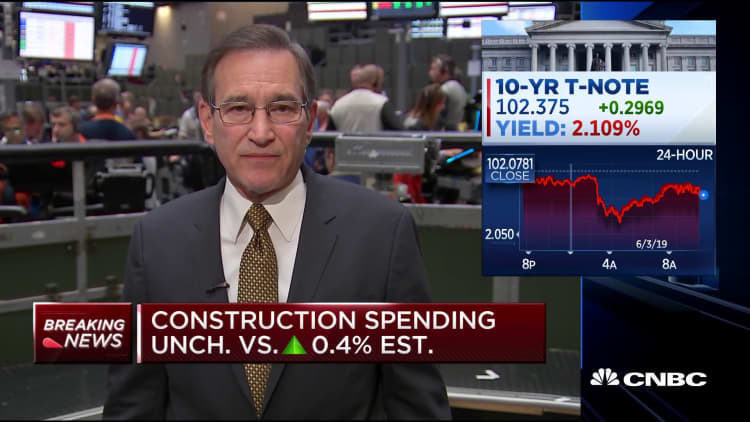
Manufacturing in the U.S. slumped to its lowest level in 2½ years amid escalating global trade tensions and a slowdown in global demand.
The closely watched ISM manufacturing index fell to 52.1 for May, compared to expectations for 53, according to Refinitiv estimates. That was the lowest reading since October 2016.
Construction spending also disappointed, with a flat reading compared to expectations for a 0.4% growth in April.
On the manufacturing reading, the big detractors came in supplier deliveries, which slumped 2.6 percentage points to 52, and inventories, which declined 2 percentage points to 50.9.
The ISM index represents readings from companies on plans to expand. Any reading above 50 is thus considered expansionary.
Respondents' comments "reflect continued expanding business strength, but at soft levels consistent with the early-2016 expansion," ISM Chairman Timothy R. Fiore said in a statement.
However, the May reading "illustrates that the factory sector is continuing to struggle in the face of weak global demand" and is consistent with GDP growth of just 1.5%, according to
The report comes amid a growing tariff battle between the U.S. and China, with negotiations at a standstill as the Trump administration seeks concessions and getting more open markets for American goods and to get tighter provisions against the stealing for intellectual property and forced technology transfer.
In a statement Friday, President Donald Trump threatened to expand the battle to Mexico, which he threatened with tariffs if the country does not stem the flow of illegal immigrants to the U.S.
Though the threat came outside the survey period, some respondents worried about the state of play between the two nations. One computer and electronic products executive said the tariff issue is "impacting costs and influencing supplier realignment on country of origin. Border issue is causing delays in imports from Mexico."
Another in chemical products said, "The threat of additional tariffs has forced a change in our supply chain strategy; we are shifting business from China to Mexico, which will not increase the number of U.S. jobs."
"Bottom line, if there is a center of the trade worry/tariff storm, it is manufacturing and the impact is continuing to get more obvious," Peter Boockvar, chief investment officer at Bleakley Advisory Group, said in a note.
Despite the tensions and the downward pressure they have put on Wall Street and the stock market, the news was not all bad from the ISM report.
The production index grew 1 point to 51.3 and employment increased by 1.3 points to 53.7. The prices index also showed a strong gain, rising from 50 in April to 53.2 in May.
"Respondents expressed concern with the escalation in the U.S.-China trade standoff, but overall sentiment remained predominantly positive," Fiore added.


